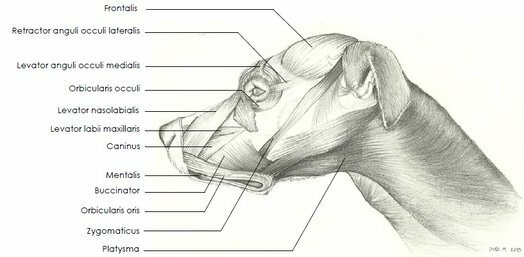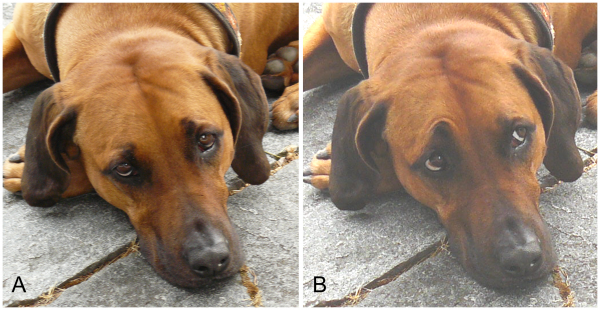Last updated December 4, 2017 at 4:49 pm
Are you a sucker for those puppy-dog eyes? Until now scientists mostly believed that animal facial expressions were involuntary, an automatic reflection of how they’re feeling. But we do know that in non-human primates, expressions can vary depending on whether or not an audience is present. Orangutans for example show more complex and intense ranges of facial expressions while they play if there is someone paying them direct attention, which suggests that expressions are not just an automatic response.

How do you tell when a dog makes a facial expression? You use the Dog Facial Action Coding System (DogFACS) – a scientific tool for identifying and coding facial movements in dogs. The system is based on the facial anatomy of dogs and has been adapted from the original FACS system used for humans. Image courtesy of DogFACS
Dogs and humans have a unique relationship, and there studies show that our canine friends do respond to the attentive states of humans. They are much more willing to steal food after being told not to when they know the humans eyes are closed compared to when they’re open, for example. Dogs, unlike other animals, are also able to follow human gaze and gestures, provided they’ve established eye contact with the person.
In new research today Juliane Kaminski and her colleagues at the University of Portsmouth tested to see whether dogs facial expressions are tailored to whether or not a human is paying them attention. A variety of dog breeds were tested in four situations, where a human was facing them or turned away, with or without food. The dogs produced significantly more facial movements when being attended to by the human demonstrator, whereas the food had no effect.
The researchers suggest that this means that the facial expressions could have a communicative purpose. Rather than being an automatic response, these changes in facial movements indicate that there’s some cognitive processes going on.
And that communication effort is not going to waste. Those puppy-dog eyes do influence human behavior, with previous studies showing that dogs in shelters that more often performed Action Unit 101, otherwise known as an (adorable) eyebrow raise, were re-homed more quickly. I mean, who can say no to a face like this:

The way to the human heart is through facial movement AU101 (inner brow raiser) seen in B (source)
Follow us on Facebook, Twitter and Instagram to get all the latest science.





























































































































































































































































































































































































































































































